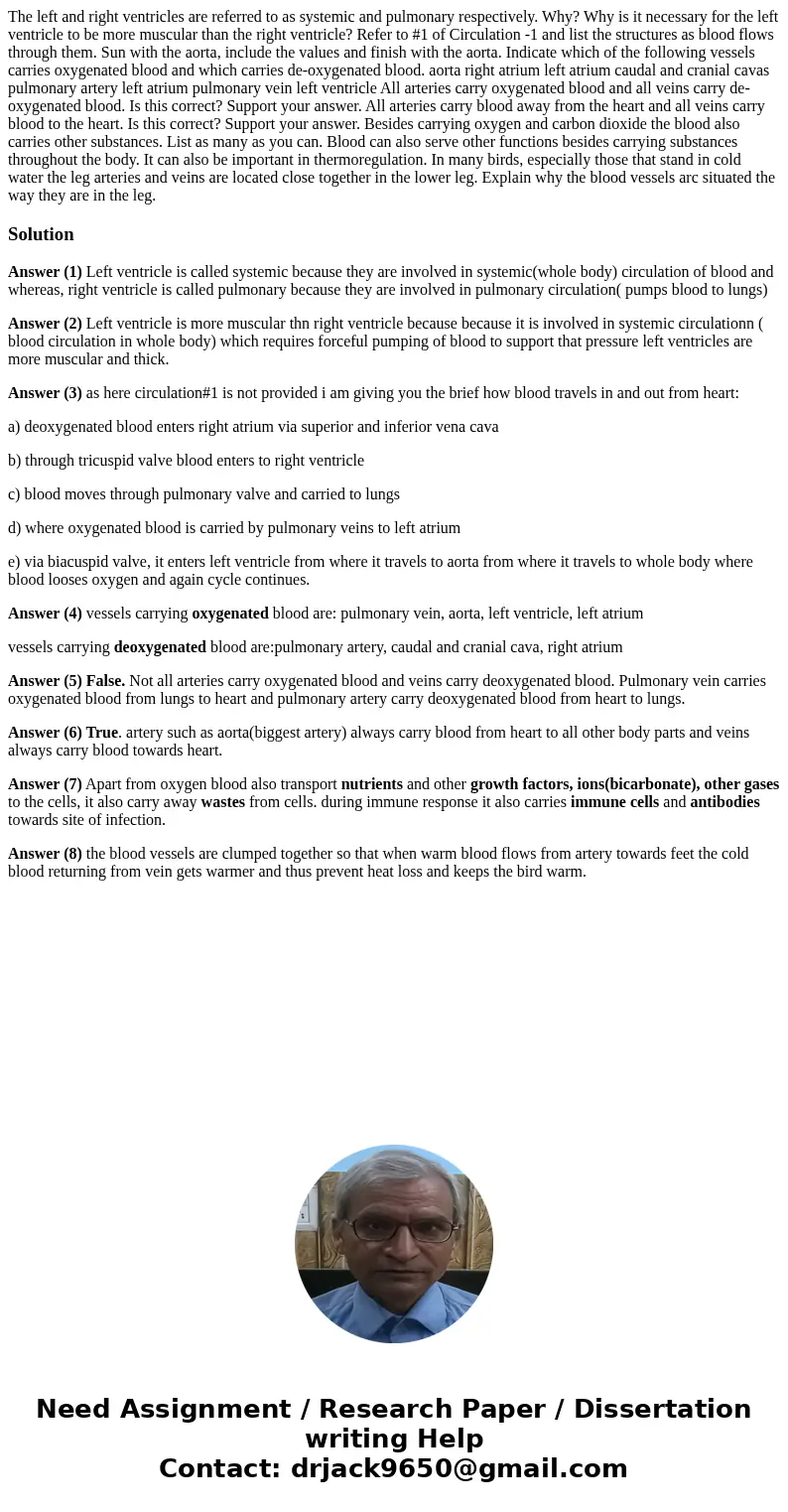The left and right ventricles are referred to as systemic an
Solution
Answer (1) Left ventricle is called systemic because they are involved in systemic(whole body) circulation of blood and whereas, right ventricle is called pulmonary because they are involved in pulmonary circulation( pumps blood to lungs)
Answer (2) Left ventricle is more muscular thn right ventricle because because it is involved in systemic circulationn ( blood circulation in whole body) which requires forceful pumping of blood to support that pressure left ventricles are more muscular and thick.
Answer (3) as here circulation#1 is not provided i am giving you the brief how blood travels in and out from heart:
a) deoxygenated blood enters right atrium via superior and inferior vena cava
b) through tricuspid valve blood enters to right ventricle
c) blood moves through pulmonary valve and carried to lungs
d) where oxygenated blood is carried by pulmonary veins to left atrium
e) via biacuspid valve, it enters left ventricle from where it travels to aorta from where it travels to whole body where blood looses oxygen and again cycle continues.
Answer (4) vessels carrying oxygenated blood are: pulmonary vein, aorta, left ventricle, left atrium
vessels carrying deoxygenated blood are:pulmonary artery, caudal and cranial cava, right atrium
Answer (5) False. Not all arteries carry oxygenated blood and veins carry deoxygenated blood. Pulmonary vein carries oxygenated blood from lungs to heart and pulmonary artery carry deoxygenated blood from heart to lungs.
Answer (6) True. artery such as aorta(biggest artery) always carry blood from heart to all other body parts and veins always carry blood towards heart.
Answer (7) Apart from oxygen blood also transport nutrients and other growth factors, ions(bicarbonate), other gases to the cells, it also carry away wastes from cells. during immune response it also carries immune cells and antibodies towards site of infection.
Answer (8) the blood vessels are clumped together so that when warm blood flows from artery towards feet the cold blood returning from vein gets warmer and thus prevent heat loss and keeps the bird warm.

 Homework Sourse
Homework Sourse